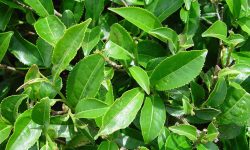We have already talked about coffee, and now is the time to break up everything about the most widely consumed beverage in the world, namely tea.
The origin of tea dates back thousands of years, being used in the space of ancient China by Buddhists and priests during meditation and prayer for its remarkable properties. This has not changed in our days, and tea continues to be consumed for its many benefits.
Go and prepare yourself a cup of tea, because we’re about to share all secrets of the most popular drink in the world.
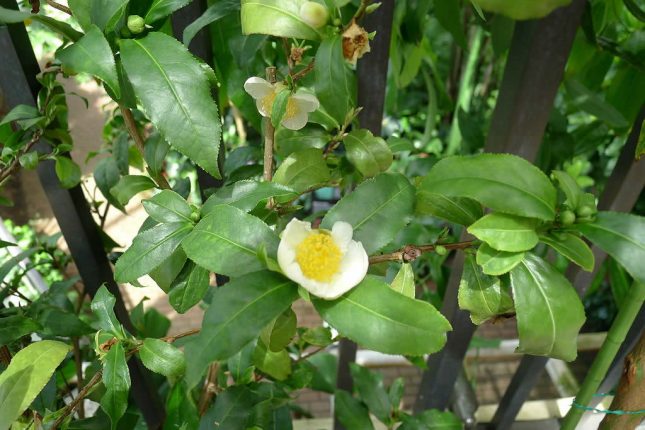
History of Tea
What is the legend of tea?
There are several legends, but the most popular tea legend is the one that originates from China. It says that around 2737 BC, Emperor Shennong enjoyed a cup of boiling water in the shade of a tree when at a gust of wind some leaves fell into his cup. After a few minutes, the emperor noticed that the color of the boiled water had changed, and he took a sip from the cup. He was very impressed with the aroma that the leaves gave to the hot water. Some say that the same emperor noticed that this liquor had medical properties and could counteract the toxic effects of other plants.

History of Tea in China

China is the place where tea was discovered by mankind 5,000 years ago. In 2016, new evidence was discovered that proves the fact that tea has been drunk since the Han dynasty, the second imperial dynasty in China from the 2nd century BCE. This evidence also shows that this dynasty was the first one to start cultivating tea every spring on Mount Meng, near Chengdu.
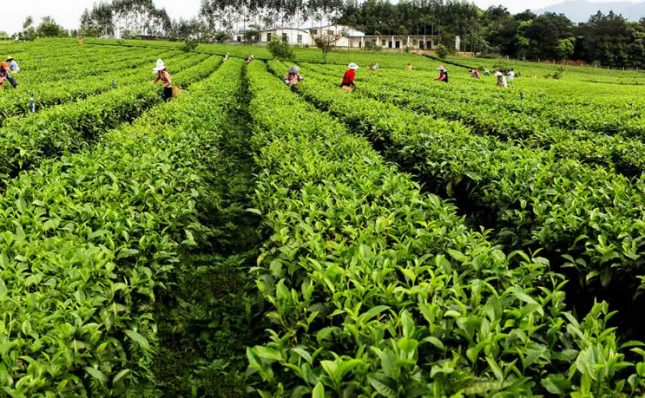
By the eighth century, tea had become popular in China, and the number of tea plantations had increased. At the same time, the cultivation and preparation were under the Chinese empire’s supervision, which gave the order that those two processes must be done only by young women due to their purity. The ways of cultivating and producing tea have long been kept secret, but during the Song Dynasty, they underwent a drastic change that led to a new form of tea, namely powder. But the Chinese did not stop there and continued to experiment with the different tea processing processes.
Thus, in the 15th century, oolong tea was discovered through a process in which tea leaves were allowed to partially ferment before roasting.
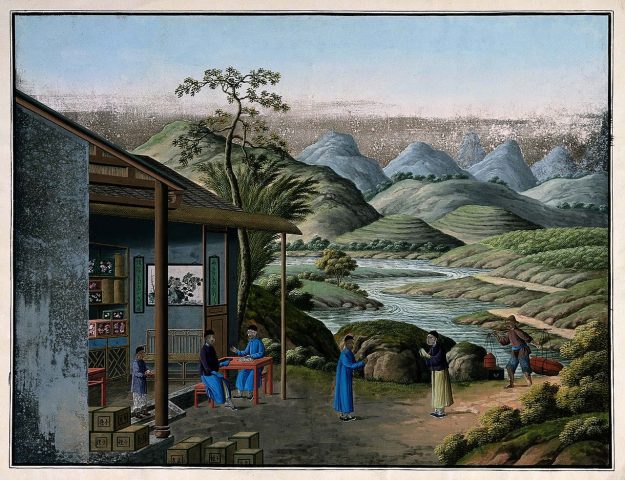
History of Tea in Great Britain
In Britain, tea was first introduced in the 17th century by East India, being the company’s most successful imported product. Due to its high price, the tea was intended only for the rich, especially members of the royal house. At the same time, the marriage of Prince Charles II to the Portuguese princess Catherina of Braganza, who loved tea, took place, and she was the one that introduced the habit of enjoying a cup of tea among her aristocratic friends.
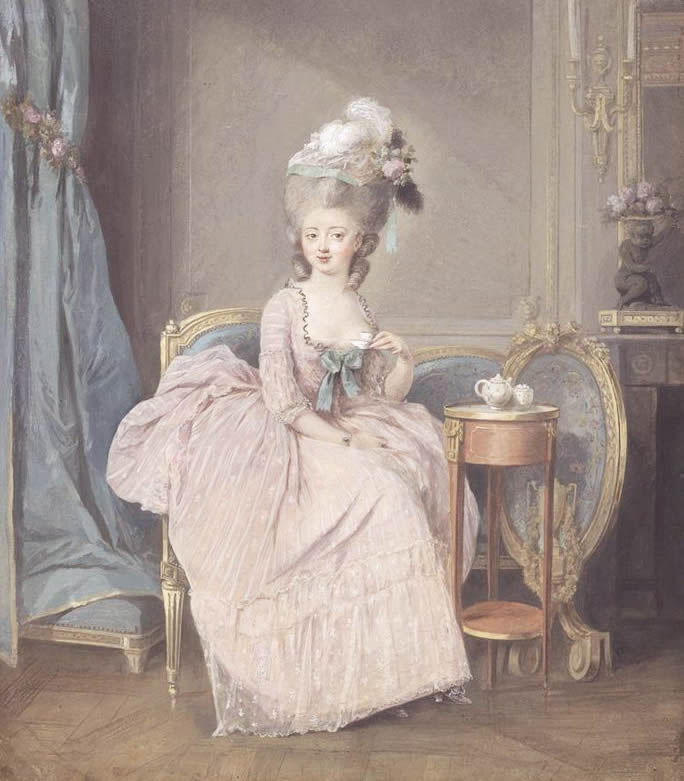
By 1720, tea consumption had increased, and the British began to enjoy this drink by adding milk and sugar, eventually becoming the British national drink. Consumption increased so much that East India could no longer meet the demand for tea imports, and the fact that the Chinese were more interested in silver than cotton caused problems in supplying and meeting market demand. Even so, the British have resorted to an illegal scheme to continue imports of tea from China. They managed to send opium to China over India in 1839 in exchange for silver, then exchanged the same silver back to China for tea.

History of Tea in India
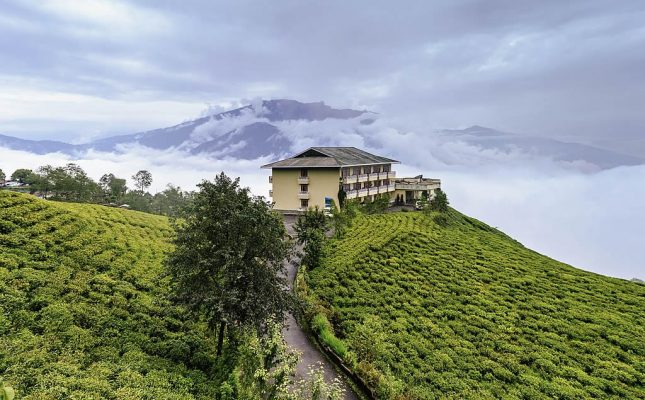
In 1840, Britain declared war on China, which decided to impose a strict embargo on all tea exports. This forced the British to find other ways to get tea. So they decided to take seeds and cultivate their tea plantations in northern India, where the climate and high altitude made it the perfect location for the tea plantation. Assam, Ceylon, and Darjeeling were the main locations for growing tea, while the Scottish botanist Robert Fortune was the person that by spying, brought in India from China the knowledge of tea processing.

History of Tea in Russia

Tea was introduced to Russia in 1618 when Tsar Alexis of Russia received it as a gift from China. The Russians loved tea from the first moment and began to import it with the help of camels. It took half a year for a camel to travel from China to Russia, so about 6,000 camels entered Russia each year, carrying about 600 pounds (270 kg) each.

History of Tea in Japan
In Japan, tea was introduced in the 6th century by Buddhist monks, who were sent to China to learn more about the culture of that country. For a time, tea was treated as a religious drink, used only by monks and priests during religious rituals. But slowly, tea became a royal drink, being drunk by Emperor Saga, who encouraged and supported the creation of tea plantations in Japan.
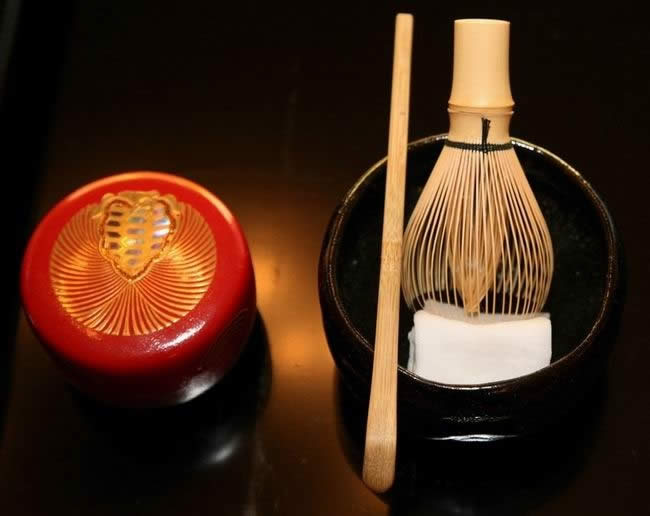
History of Tea in North America
Being colonized by Europe, North America took over the same habits and traditions quite quickly. Until the second half of the 18th century, the British exported tea to North America, being the most valuable product exported by Great Britain. The Americans, like the others, were enchanted by this drink and opened the first tea houses and invented all sorts of tea accessories made from silver and porcelain.

Where did tea come from originally?
As many legends say and the new evidence reveals, the tea comes originally from China and has a 5,000-year-old and extremely fascinating history.
Who first discovered tea?
Emperor Shennong, which was also a renowned herbalist, was the first person who accidentally discovered tea 5,000 years ago. He named the new brew “ch’a” and used it for its medicinal properties.
Did the British introduced tea to India?
The British introduced tea to India in the 19th century. They were trying to overthrow their dependence on China, and after discovering that Northern India provided the perfect conditions to grow these plants, they brought the seeds from China and planted them in India.
Did the British steal tea?
Yes, the British stole tea from China and introduced it to India, where they set up their own plantations. Specifically, the British hired a Scottish botanist named Robert Fortune to steal and introduce tea plants into India. Robert acted like a real spy and led one of the most important acts of espionage in history. Often, he disguised himself as a Chinese merchant, managing to steal about 13,000 tea plants and lots of seeds. He is also the one who stole the methods of processing tea leaves from the Chinese.
Why did Britain want Chinese tea?
Tea was a huge hit in the UK and soon became the most important imported item, but China was the only tea producer in the world at the time. High tea consumption in England and dependence on China became a problem when China no longer accepted opium as payment in exchange for tea. The two nations started a war against each other, but at the same time, the British were stealing seeds and plants from China to create their tea plantations and to supply their own country.
When did tea come to Europe?
Tea was brought to Europe by the Portuguese in the 16th century, Portugal being the first European country to advance to East India and the first country to make contact with China in 1516. In a letter from 1569, a Portuguese missionary wrote, for the first time, to the King of Portugal about a colorful drink with medicinal properties that only the wealthy Chinese drank. Immediately afterward, the Dutch took over the tea trade, spreading it all over the continent.
The Tea Production Process
In order to answer the question “How is tea made?“, we need to go back to China because there, over time, the Chinese have developed unique methods of processing so that several varieties of tea are now produced from the same type of leaf. There are 2 ways of processing tea leaves called the orthodox and the CTC method.
The orthodox method includes the following steps:
- Plucking
It all starts with plucking tea leaves from a plant called Camellia sinensis. Leaf picking usually takes place twice a year in early spring and early summer and is recommended to be done by hand because the machinery causes damage to the leaves, reducing the quality of the tea.
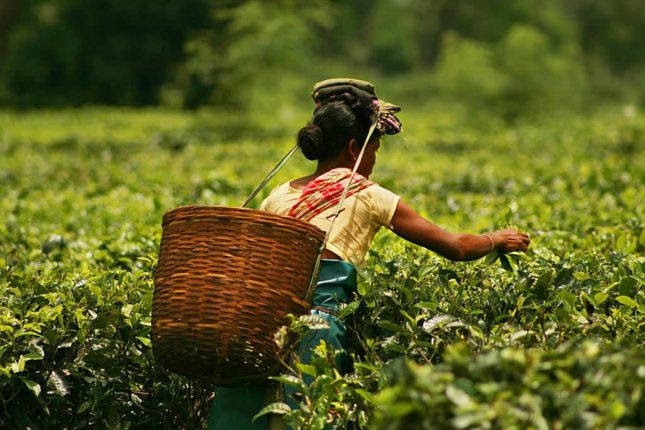
- Withering/wilting:
It is important that freshly plucked tea leaves arrive at the factory as soon as possible to begin the wilting process, which generally takes between 12 and 17 hours. The wilting process involves removing excess water from the leaves by up to 30-40% by placing the tea leaves on a wire mesh. Moreover, during this process, the leaf proteins break down into free amino acids, and the availability of the caffeine released increases.
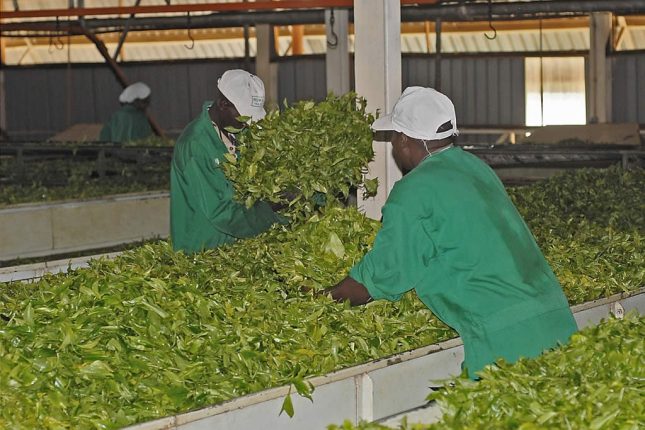
- Rolling / Disruption
The rolling step (disruption or bruising) is the process by which the leaves are shaken, rolled, and crushed. This step of the process was made by hand in the past, but many factories use rolling machines now. The main purpose of the rolling step is to break the cell walls of the leaf, which facilitates the beginning of the next step called oxidation.
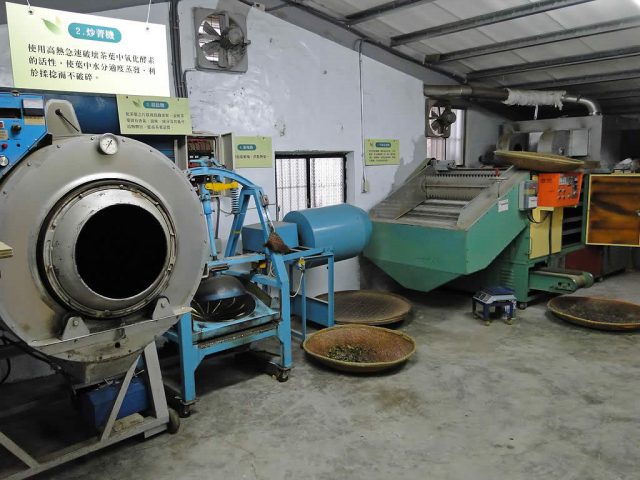
- Oxidation
The oxidation step is a crucial one because this is the moment when it is determined what type of tea will result from the harvested leaves. This step involves placing the leaves on trays and leaving them for 30 to 2 hours in a climate-controlled room. During this time, the chlorophyll in the leaves is broken down and the resulting enzymes react with the air in the atmosphere, changing the leaves color. The oxidation process must be carefully monitored and stopped when the leaves have reached the stage for the desired tea. Green tea completely omits this step because, as the name suggests, it is a tea of the color green, but for oolong tea, the leaves should reach anywhere between 5-40% oxidation and 100% oxidation for black tea.
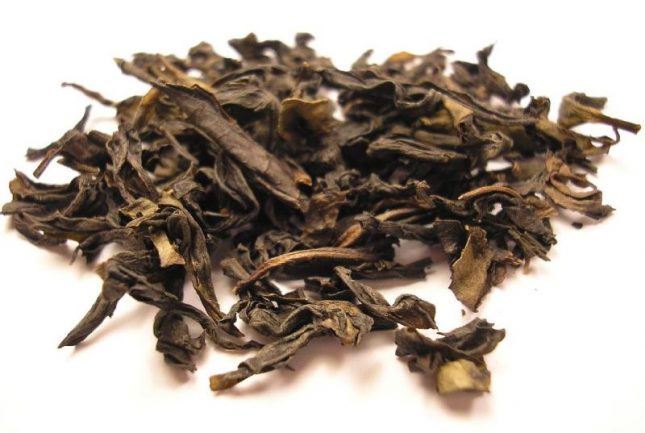
- Drying
Once the oxidation step is complete, the tea leaves are ready to dry. This last step can be done in several ways including panning, sunning, air drying, or baking. Drying reduces the water content of the leaves to about 3% and is especially important in the aroma that the tea acquires because depending on the method of heating, the flavor of tea can change.
Invented during World War II, CTC (Cut, Tear, and Curl) is a method of processing black tea. It is similar to the orthodox one where the leaves are first withered, but after that, they are put through a series of cylindrical rollers that have hundreds of sharp teeth, which crush, tear, and curl the leaves. The finished product is tiny granules that are perfect for tea bags.
How are the leaves for tea cultivated?
Tea leaves are harvested only when the plant reaches three years old, and it is done mainly by hand because, in this way, the leaf preserves its quality. For a while, machines were used by tea growers, but when they noticed that they were damaging the leaves and decreased the quality of the final product, they preferred to return to hand cultivation. Furthermore, not all the leaves of a plant are harvested, but only the youngest leaves together with a small piece of stem.
Types of Tee
In the world, there are about 3000 varieties of tea, each with its own characteristics and benefits, but the world’s primary types of tea are the true teas and herbal teas.
What is a true tea?
True tea refers to all teas that result from the leaves of the Camellia Sinensis plant. The most popular true teas are green, white, yellow, black, and oolong and they all contain caffeine naturally.
What is herbal tea?
Herbal teas do not contain caffeine and are produced exclusively from herbs or a combination of herbs. Mint, chamomile, hibiscus, fennel, and echinacea tea are just some of the herbal teas.
What is the difference between true tea and herbal tea?
The difference between real and herbal tea is the plant used to make tea. True teas are made from a single plant called Camellia Sinensis, while herbal teas are produced from a variety of flowers. Moreover, only the leaves are harvested and used for the production of true tea, and whole plants with stems, leaves, roots, flowers, bark, or rhizomes for herbal tea.
The Health Benefits of Tea
With a very low caloric content, tea is, without a doubt, one of the world’s healthiest drinks you can enjoy every day. This drink, considered since ancient times a magical one, contains antioxidants, flavonols, flavonoids, catechins, and polyphenols that contribute to the body’s health. Although experts say that any tea is good, each of them has its own benefits, so let’s try to see the types of teas and their health benefits.
Green tea
Green tea is one of the oldest and most studied teas. Studies have shown that green tea, unsweetened and made from the best quality leaves, is one of the most concentrated sources of antioxidants that have many health benefits, which may include: improved brain function, fat loss, reduced risk of neurological disorders like Alzheimer’s and Parkinson’s diseases, reduced risk of stroke, improved cholesterol level, and preventing type 2 diabetes.
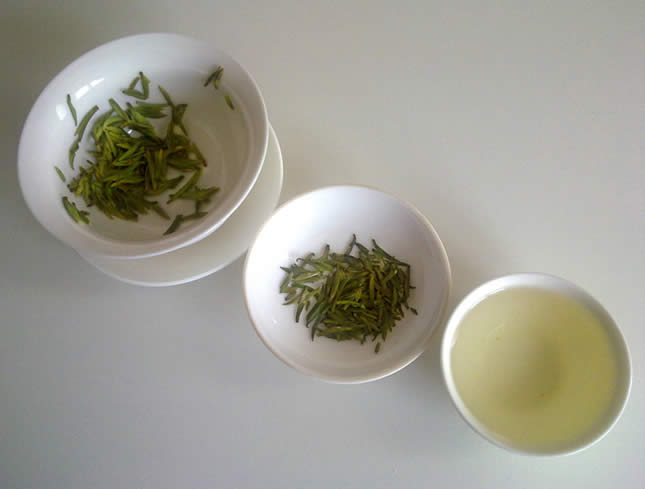
Black tea
Black tea differs from green tea only in the level of fermentation of the leaves, but it also offers a lot of health benefits such as: decreasing the risk of chronic disease, reducing the risk of stroke, lowering “bad” LDL cholesterol and blood sugar levels, improving gut health due to its antimicrobial properties, and may also reduce the blood pressure.

White tea
The least processed of the true tea, white tea’s benefits include reduced risk of heart disease, preventing tooth decay, boosting skin and hair health, helping with weight loss, improving calmness, focus, and alertness, and lowering the risk of osteoporosis.

Oolong tea
Like all the other true tea above, oolong tea is known for its vitamins, minerals, and helpful antioxidants. Improved heart health, weight loss, increased bone strength, and protection against diabetes are some of the health benefits of oolong tea.
Like true teas, herbal teas have special medicinal properties and are very good for health. Furthermore, they are caffeine-free, being the perfect choice for the ones that want to avoid it. Herbs like chamomile, peppermint, ginger, lavender, and hibiscus are known to boost the immune system and metabolism, improve cognitive function, reduce stress, and increase energy.
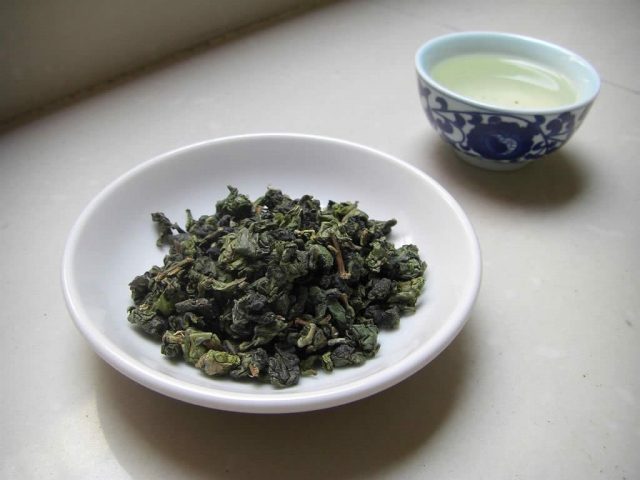
Is it good to drink tea every day?
Tea is one of the healthiest drinks and yes, it is good to drink tea every day but in a moderate amount. Consumption of more than 3-4 cups per day (approximately 710-950 ml) may cause some side effects.
Which tea is the healthiest?
Proclaiming that one type of tea is the healthiest is very difficult or even impossible. Although in all the tops, green tea comes first, it cannot be said that it is the healthiest tea. There are thousands of types of teas that have thousands of different health benefits. Furthermore, even if specialists argue with each other when it comes to how long a teabag needs to be steeped or the quantity a person should drink, they agree on the fact that any type of tea is good for the human body.
Which tea is highest in antioxidants?
Coming from the same plant called Camellia Sinensis, the green, white, black, and oolong are the highest teas in antioxidants, but, of course, in various amounts. No matter which types of these four teas you choose to drink, you will get a doze of antioxidants such as catechins and tannins.
Is milk tea good for health?
There is no conclusive answer as to whether or not drinking milk tea is good for your health. Most studies conducted on black and green tea concluded that milk affects the absorption, and antioxidant activity of tea compounds, diminishing the overall health effects of tea on the vascular system. Casein, a milk protein, may be associated with flavonoids in tea, preventing their activity in the body.

However, some researchers do not agree with this, and their studies claim that the concentration of antioxidants in the blood is not affected, because the combination of proteins and polyphenols decomposes during digestion.
Unfortunately, no studies have looked at the effects of adding milk to teas other than black and green.
Is tea better than coffee?
Despite all the research and studies done over time, there is still no concrete answer as to which drink is the best choice for health. Both drinks contain caffeine, antioxidants, and polyphenols, which according to studies, can minimize the risk of developing diseases such as cancer, cardiovascular diseases, and neurodegenerative diseases — including Alzheimer’s and Parkinson’s. Coffee is often known for its energy-boosting effect, while tea is preferred for its anti-stress effect. In the end, the choice basically comes down to what beverage you prefer to drink, what your caffeine tolerance level is, and which effects you are looking for.
Whatever choice you make, keep in mind that these two drinks are considered healthy as long as they are consumed in moderation and without added sugar and milk.
Is green tea harmful?
Drunk in moderation, green tea is not harmful to health. Moreover, this type of tea will help you improve your skin, maintain your heart health and low cholesterol, and minimize the risk of type 2 diabetes.
However, if you exceed the recommended daily dose (7-8 cups), then green tea becomes unsafe. Headaches, irregular heartbeats, stomach problems, and insomnia are some of the side effects of consuming a large amount of green tea.
What are green tea leaves?
Camellia Sinensis is a plant whose leaves are used to make not only green tea but also black, white, and oolong tea. To obtain these teas, the leaves oxidize differently.
What is matcha?
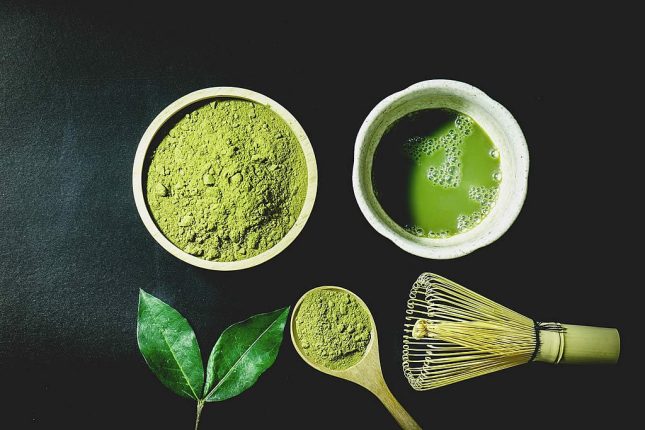
Matcha is a special form of green tea that was used by Chinese Buddhists before teapots existed. It translates to “powder tea” and it has become widely consumed all over the world. Japan is the country that has perfected the process of obtaining this version of tea and is the largest producer of Matcha in the world. The laborious process of obtaining Matcha begins by covering and protecting the bushes of the plant Camellia sinensis from the sun’s rays a few days before harvest. This step increases the chlorophyll level in the leaves, which offers them a vibrant green color. Then, after being harvested, the leaves are steamed and dried, then grounded in slow-turning stone mills that turn them into an intense green powder.
Side Effects Of Tea
Why is tea not good for you?
No evidence was found that drinking tea is harmful to the human body. Of course, in huge amounts, side effects will appear, but as long as you drink moderate quantities, you will be fine.
What Are the Side Effects of Drinking Tea?
Many of the side effects of drinking tea only occur when consumed in large quantities. They are as follows:
- headaches and sleeping problems due to caffeine
- stomach problems due to tannins that increase the amount of acid
- nausea and vomiting, again due to tannins
- dizziness due to caffeine that decreases blood flow to the brain
- liver disease
- irregular heartbeat
Can tea become toxic?
Tea can become toxic or unsafe in the following situations:
- when you exceed the daily dose recommended by specialists
- when the source and amount of chemicals used for fertilization and weed maintenance are unknown
Should you drink tea on an empty stomach?
Most experts do not recommend drinking tea on an empty stomach. Tea is an acidic drink that, when drunk on an empty stomach, can cause heartburn and extreme acidity in the stomach and even in the mouth, leading to erosion of tooth enamel.
Which drug is present in tea?
The drug found in tea is also the world’s most widely used psychoactive substance called caffeine. However, each type of tea has a different amount of caffeine.
Caffeine Content of Tea
White Tea: 10–25 mg
Green Tea: 25–35 mg
Oolong Tea: 30–50 mg
Pu-erh Tea: 30–40 mg
Black Tea: 14–60 mg
Make A Perfect Cup Of Tea
According to tea experts, to properly prepare a perfect cup of tea you need to follow a few simple rules that do not require much time or a complicated prop.
- Boil 200 ml/1 cup of water
- Pour the water into your favorite cup
- Allow the tea bag to brew ( green and oolongs tea brew in 1-3 minutes while herbal teas may need to steep for up to 6 minutes)
- Stir the tea bag
- Remove the teabag
Curiosities
Who is the father of tea in China?
In Chinese history, Lu Yu, the author of the “The Book of Tea“, is considered the father of tea. He was abandoned at a very young age and adopted by monks who educated him and made him follow the Confucian tradition. In the book, Lu Yu described how to cultivate tea, the processes of preparing the leaves, the different classifications of tea, and the tea-drinking customs.

Who is the father of tea in India?
Soldier, explorer, and author, Charles Alexander Bruce is known for holding the title of the father of tea in India. Working for the British East India Company, he managed to create and cultivate his first plantation of indigenous tea plants in India. The tea made from its indigenous plants has been approved by tea experts and even by Lord Auckland.
Which country drinks the most tea?
While popular belief would put China, which is the birthplace of tea, as the country that consumes the most tea, the reality is that it is not even in the top five when you take into consideration the tea consumption per capita. Turkey ranks first, being the largest tea-consuming country in the world, with a per capita consumption amount of 6.96 lbs (3.16 kg) annually. In second place is Ireland with a consumption of 4.83 lb (2.19 kg), then Iran, and United Kingdom, followed by Russia and Morocco.
| Rank | Country | Tea consumption |
|---|---|---|
| 1 | Turkey | 3.16 kg (6.96 lb) |
| 2 | Ireland | 2.19 kg (4.83 lb) |
| 3 | Iran | 1.99 kg (4.38 lb) |
| 4 | United Kingdom | 1.50 kg (3.30 lb) |
| 5 | Russia | 1.38 kg (3.05 lb)) |
| 6 | Morocco | 1.22 kg (2.68 lb) |
| 7 | New Zealand | 1.19 kg (2.63 lb) |
| 8 | Chile | 1.19 kg (2.62 lb) |
| 9 | Egypt | 1.01 kg (2.23 lb) |
| 10 | Poland | 1.00 kg (2.20 lb) |
What countries are the largest tea producers in the world (2021)?
- China – 2,791,837 (tons per year)
Even though it is not the first country when it comes to tea consumption per capita, China is the largest tea-producing country in the world. With an annual production of almost 2,400,000 tons, the country cultivates about 3,185,3111 hectares and exports about 40% of its total production, being the largest exporter of tea in the world, at the same time.
- India – 1,390,080
India is the second-largest producer of tea in the world, having a production of over 1,300,000 tons per year and 628,199 hectares. Being the country with the highest consumption of tea, India consumes 70% of the tea that is produced in the country, while the remaining 30% is exported. China and India produce together more than 60% of the world’s total tea.
- Kenya – 458,850
With a production of about 500,000 tons, Kenya, unlike other countries, does not have such a large area of tea cultivation, but it has focused on innovation, research, and development in industry, becoming one of the largest tea-producing countries but also the largest exporter of black tea in the world.
- Sri Lanka – 300,120
Sri Lanka contributes about 9% of international tea production, after China and India. The country has an area of 187,309 hectares for tea cultivation and produces three main varieties called black Ceylon, green Ceylon, and white Ceylon tea. Tea production in Sri Lanka is one of the most important industries for the country’s economy.
- Vietnam – 269,281
Vietnam began tea production in 1880 when the French planted the first tea plants in Pho Tho. The industry has expanded extremely fast due to the advanced technology used, which helps them to make limited quantities of artisanal teas. The main varieties of tea produced in Vietnam are black, green, and white.
- Turkey – 261,000
With an area of 84,880 near the city of Rize, Turkey produces 260,000 tons per year. Due to the fact that the Turks consumed a lot of tea, almost all of the country’s production is consumed domestically, with a relatively low percentage of tea exports.
- Indonesia – 137,803
The Dutch brought tea to Indonesia in the 1700s. Indonesia now produces over 137,000 tons per year on an area of 108,750 hectares. Black and green tea are the dominant ones in Indonesian tea production.
The next 3 countries that complete the top 10 largest tea producers s are Myanmar with a production of 132,494 tons, Iran with 90,832, and Bangladesh with 90,685.
Why is tea popular in England?
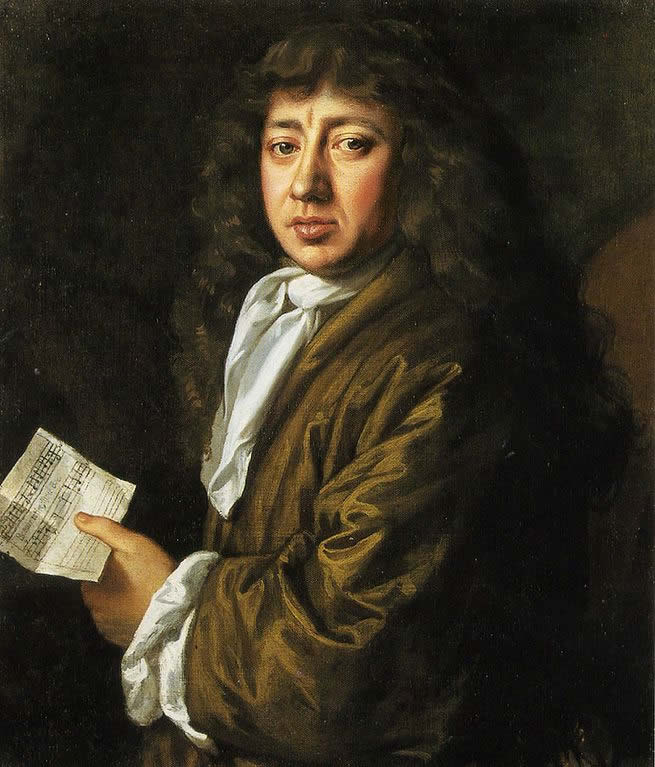
According to history, tea became the favorite drink of the British around 1700, when the British East India Company held a monopoly over the tea industry in England. The government, which was gaining lots of money from taxing tea, encouraged the population to drink more tea and less coffee, which at that time was imported from Britain’s rival colonies. Over the years, tea consumption grew and in 1757, the British East India Company was importing an average of four million pounds. It turns out that Britain is one of the world’s biggest tea-drinking nations due to taxes imposed by the government.
What came first coffee or tea?
The history of tea dates back 5,000 years (2700 BC), being the first and oldest drink of mankind. Coffee, on the other hand, appeared around 900 AD, about 3,000 years later than tea. So yes, tea was the first.
Who invented tea with milk?
Even if it seems incredible, the practice of adding milk to tea is a very old one. It was used especially by Tibetans and Mongols, which added milk and butter to their beverage in order to increase its nutritional and caloric value of it. This kept them filling during the winter months and gave them more energy while keeping them hydrated.
What culture drinks the most tea?
Turkey, Ireland, and the United Kingdom rank first in the top three countries with the highest per capita tea consumption, followed by Iran in fourth place, Russia, Morocco, New Zealand, Chile, and Egypt.
Which is the best tea brand?
Vahdam India is the best and most popular tea brand in the market today. Procured directly from farmers’ plantations in India, Vahdam tea is certified climate-neutral and plastically neutral. The brand’s most popular product is Earl Grey tea which includes natural oil from the Bergamot fruit, making it perfect for hot and iced tea.
What is the oldest tea brand?
Twinings is the oldest tea brand in the world and it was founded in 1706 by a man called Thomas Twining. Thomas worked for East India Company and later decided to open his own tea shop at No. 216 Strand, London. Known as Britain’s first known tea room, the shop still exists today.
Which is the No 1 tea brand in India?
Tata Tea is the biggest-selling tea brand in India and the second-largest tea producer and distributor in the world.
What tea does the royal family drink?
Queen Elizabeth’s favorite tea is Earl Grey tea with a splash of milk and no sugar.
What is the most expensive type of tea?
The world’s most expensive tea is called Da-Hong Pao Tea and it is a black tea that comes from China with roots back in the Ming dynasty. Also known as Big Red Robe Tea, it is grown and cultivated in the Wuyi Mountains, having a price of $ 1,400 per gram. This high price is explained by the fact that there are only six mother trees on the planet from which the leaves of this tea can be grown.
Which tea should I drink?
As all teas are good for health, choose the tea you like best. Leave us a comment and say which one you prefer.
Top Tea Quotes and Tea Sayings
- “Tea is a religion of the art of life.” – Kakuzo Okakura, The Book of Tea
- “Tea is the elixir of life.” – Eisai, Kissa Yojoki
- “Life is like a cup of tea. It’s all in how you make it.” – Unknown
- “The path to Heaven passes through a teapot.” – Ancient proverb
- “There’s always time for tea.” – Seanan McGuire, An Artificial Night
- “Better to be deprived of food for three days, than tea for one.” Ancient Chinese proverb
- “If a man has no tea in him, he is incapable of understanding truth and beauty. “ – Japanese proverb
- “I got nasty habits – I take tea at three.” – Mick Jagger
- “A cup of tea would restore my normality.” – Douglas Adams
- “You’ll never find a cup of tea big enough or a book long enough to suit me.” – Winston Churchill




